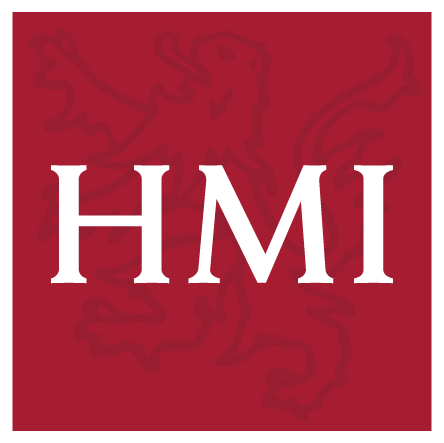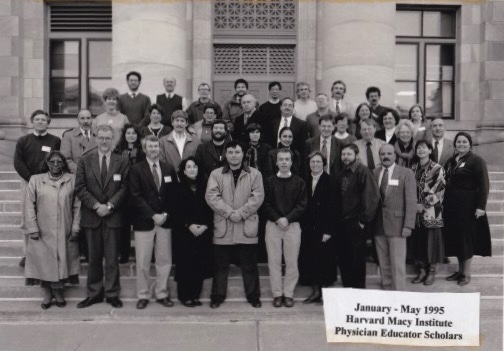For decades, faculty development in the health professions has played a vital role in advancing teaching excellence and supporting educators through continual changes in health care, pedagogy, and technology. In 1994, however, the launch of the Harvard Macy Institute (HMI) marked a groundbreaking shift in how clinicians were prepared to lead educational change.
While many contemporary programs focused primarily on instructional techniques and curriculum design, HMI distinguished itself by cultivating a community of educational scholars. It brought faculty together across disciplines, fostering a dynamic learning environment that extended well beyond medicine. This interdisciplinary model promoted both professional growth and curricular innovation.
The story of the Harvard Macy Institute began when Dr. Elizabeth Armstrong, at the request of then Harvard Medical School Dean Daniel C. Tosteson, sought funding from the Josiah Macy Jr. Foundation. Drawing on her deep expertise in curriculum reform, Dr. Armstrong envisioned a pioneering program where educators in the health professions could learn with—and from—one another.
Her visionary proposal led to the founding of HMI and the development of its first two groundbreaking courses, including what would later become one of its signature offerings: the Program for Educators in Health Professions.
Designed in collaboration with faculty from the Harvard Graduate School of Education, the program was grounded in six foundational themes—educational theory and practice, curriculum design, leadership and change management, innovation, the scholarship of teaching and learning, and personal and professional growth. From its inception, the course empowered health care educators to both reflect on their practice and lead system-level improvements, positioning education as a vehicle for transformation across the health professions.
With the goal of advancing the professional development of health care professionals as educators, Program for Educators in Health Professions has become a rite of passage for educational leaders worldwide and serves as a model of excellence in health care education.
“The program’s grounding in these fundamental theories is what has kept it relevant for 30 years and counting,” explains Holly Gooding, MD, MSc, course director and associate dean for professional development and education at Emory University School of Medicine. “Over time, the curriculum has evolved with the field to include the science of learning, health systems science, and simulation science.”
Although the program initially focused on physician educators, it soon embraced the interprofessional nature of health care. “Health professionals work in teams, and welcoming educators that reflect the health care workforce has been an essential addition to the program,” Dr. Gooding adds.
Evolving with Purpose
While core elements like microteaching and case-method based learning remain central to the program, HMI has adopted new approaches. Core topics such as educational scholarship and the science of learning, were organized into course themes, and the program now integrates social media and academic blogging to extend learning beyond the classroom.
Technology has significantly reshaped the scholar experience. Where once the program relied on bulky paper binders, it now benefits from a streamlined digital infrastructure supported by a robust website and learning management system. Social media platforms, such as LinkedIn have also enhanced engagement, allowing participants to share insights and amplify learning across the health professions community.
The most dramatic shift came in response to the COVID-19 pandemic, which prompted a rapid transition from a fully in-person format to a hybrid model. This blended approach—combining virtual learning with in-person engagement—has enabled the program to reach a wider and more diverse group of scholars while preserving the meaningful connections that emerge through face-to-face interaction.
The Program for Educators in Health Professions continues to evolve in alignment with emerging educational standards and technologies. “In 2023, the Accreditation Council for Graduate Medical Education (ACGME) published the clinician educator milestones, and we’ve worked to align the program to these core competencies,” Gooding notes, “In addition, we are already incorporating a greater emphasis on the use of AI in health care and education.”
Harvard Macy Institute Mission
Yet, amid all the change, one constant remains: a deep commitment to building a community of educators and providing a space for reflection on professional growth and core educational values. This enduring dedication—coupled with the strength of the faculty and a vibrant alumni network—continues to be the driving force behind HMI’s impact.
That influence reaches well beyond the program itself. “Our programs empower graduates to lead innovative projects and ascend to leadership roles within their institutions, resulting in transformative advances in health professions education globally,” says Sarah Wood, MD, director of HMI and course director.
The global community fostered by HMI has far-reaching impact, with scholars and faculty from more than 160 countries. For many educators, the international network of colleagues cultivated through HMI becomes an invaluable source of scholarly collaboration, speaking opportunities, and global perspectives—supporting both individual growth and broader institutional impact.
“The HMI learning environment is incredibly unique,” said Dr. Wood. “It enables emerging leaders in medical and health professions education to connect with peers worldwide and cross-pollinate ideas, approaches, and practices to enhance the work they are doing at their own institutions.”
HMI’s mission focuses on collaborative learning, systems thinking, and interdisciplinary synergies. This work creates a ripple effect, much like anthropologist Margaret Mead’s idea that “a small group of thoughtful, committed citizens can change the world.”
With a deliberate focus on inclusion, HMI emphasizes idea-sharing across disciplines, professions, and geographic regions. According to Wood, the program’s commitment to interdisciplinary, interprofessional, and international exchange is essential to cultivating a dynamic learning environment where innovation and transformation can flourish.
Connections with organizations such as the Josiah Macy Jr. Foundation, the Arnold P. Gold Foundation, and the Kern National Network for Flourishing in Medicine have helped broaden participation in HMI’s programs. These collaborators, along with many other academic institutions and professional organizations around the world, actively invest in faculty by supporting their participation. Together, these efforts ensure that educators from a diverse array of backgrounds and settings can contribute to, and benefit from, the collaborative learning and innovation that define the HMI experience.
Looking Ahead to the Future
Still, challenges remain—particularly in ensuring sustained investment in faculty development. “Faculty development is critical, yet often is the first to go when institutions face financial pressures,” Wood notes, “Now, more than ever, advanced faculty training is paramount.”
HMI continues to serve as a nurturing hub for educators, placing faculty development at the heart of its mission. This emphasis not only supports individual growth but also helps strengthen, support, and retain the educators who will train our next generation of health care professionals.
From its early days rooted in teaching physician educators to its current role as a global leader in health professions education, the Program for Educators in Health Professions has consistently adapted to meet the evolving demands of the field. Its unwavering focus on community, innovation, and collaboration ensures its continued relevance and impact for decades to come—empowering the next generation of educators to evolve, lead, and transform health professions education worldwide.
HMI Staff


